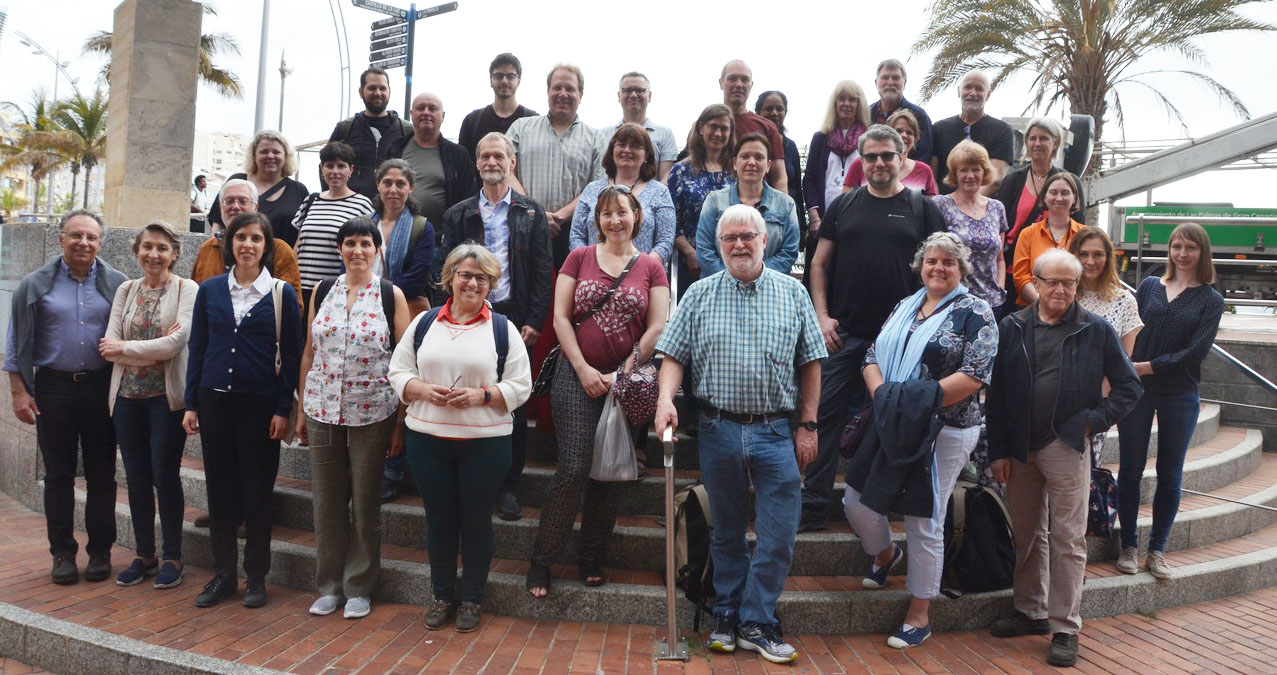As the Working Group on Zooplankton Ecology reaches a milestone of thirty years, the current chairs Lidia Yebra, Spanish Institute of Oceanography and Sophie Pitois, Cefas, take a look at some of the group's recent achievements.
Climate change and ecosystem functioning were the two main scientific drivers for the establishment of the Working Group on Zooplankton Ecology (WGZE) and are still critical in influencing the direction of the group's work and the topics addressed. Over the course of the last 30 years, WGZE has had to adapt to the evolving demands of the time, as for example, the adoption of the Marine
Strategy Framework Directive (MSFD) in 2008 as
the European Union's (EU) mandate to protect the marine environment across
Europe has led to increasing demand for zooplankton data.
At the same time, ever reducing budgets for monitoring have driven the development of new tools and techniques for the sampling and analysis of zooplankton, including automated methods, image analysis and molecular tools. WGZE members have been proactive in sharing their knowledge and coordinating their efforts to disseminate and promote the results of their studies. Working side by side with other expert groups and contributing to ongoing developments in this area of science is a characteristic of the group. One example is the continued collaboration to update ICES Ecosystem Overviews.
Zooplankton production
In the past five years, further advances in zooplankton production assessment include the evaluation of 50 empirical models used to estimate zooplankton production, and their further application to assess zooplankton production variability within 20 ICES time-series.
A much needed review of zooplankton production methodologies was carried out in cooperation with PICES Working Group 37: Zooplankton Production Methodologies, Applications and Measurements in PICES Regions, which resulted in the production of two review papers on traditional and biochemical methods to estimate zooplankton growth, several international training workshops, and theme sessions, and the creation of a database of laboratories working on this topic.
A significant recent achievement of the group is the creation of a reference database of key zooplankton traits, used to identify the most important zooplankton species in terms of abundance, biomass, or ecosystem function in ICES seas. Building on this effort, the group is developing a WGZE Biometrics Atlas which will serve as a tool to associate traits with species and map trait distribution back to known distributions of species, helping to analyze the functional structure of zooplankton communities.
Micro- and macro
Copepods or mesozooplankton are not the only organisms studied by the group; WGZE also research other less well-known groups, such a micro- and macrozooplankton, including gelatinous species. A review of macrozooplankton knowledge and the impact on the carbon fluxes into the deep ocean led to an ICES ASC theme session on mesopelagic ecosystems. In addition, inventories of time-series on microzooplankton and on gelatinous plankton in the ICES area were also produced and best practices for sample collection and enumeration were provided for their monitoring in the ICES area.
Dedication
Membership has grown steadily over the last 30 years: starting out with about 10 in the early days, the group now boasts almost 100 members. WGZE has met every year since its creation and physical participation has also increased with 32 WGZE members attending the last physical meeting in 2019. Now, in its thirtieth year of existence, and in the middle of a pandemic, the group has had to meet remotely rather than in person. This did not dull the work though as 60 participants logged in and discussions were as rich and constructive as ever.
The future
To showcase the group's most recent advances, an ICES Journal of Marine Science themed set of articles is set to be published in 2022:
Marine zooplankton time series: essential tools to understand variability in productivity-determining processes in the oceans.
Submissions are open until 14 June 2021.
The collection of papers will aim to illustrate the importance of time-series for the studies of climate driven changes in the physical and biological environment on zooplankton community structures and distribution, and the resulting impact of warming seas on marine ecosystems.
WGZE will continue to address current and emerging issues within the field of zooplankton ecology with the same level of enthusiasm it has demonstrated over the past 30 years. Next steps include the organization of the 7th ICES/PICES Zooplankton Production Symposium to gather zooplankton enthusiasts from over the world in Hobart, Tasmania in March 2024.
The Zooplankton Methodology Manual, the Zooplankton Status Reports, and the International Zooplankton Symposia are among other major achievements of the group, all of which have had an important impact on the wider field, and were highlighted in The ICES Working Group on Zooplankton Ecology: Accomplishments of the first 25 years.

Working Group on Zooplankton Ecology-Working Group on Phytoplankton and Microbial Ecology joint meeting in Las Palmas de Gran Canaria, Spain in 2019. (Photo: Peter Wiebe).

